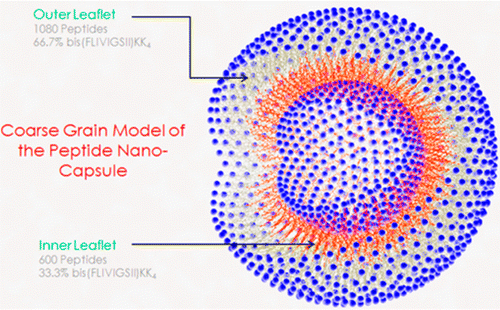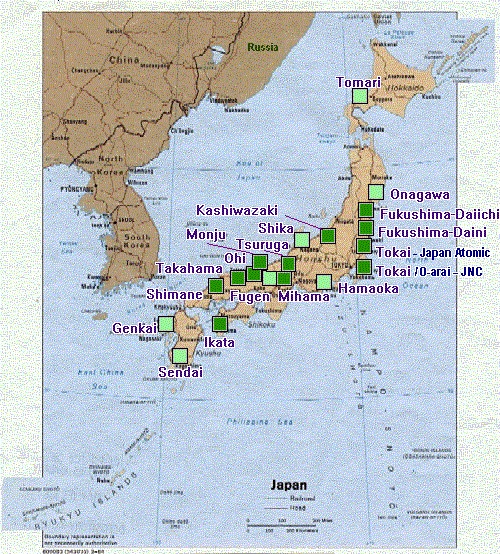
Blog
-
Geiger Readings for April 6, 2014
Ambient office = 91 nanosieverts per hourAmbient outside = 118 nanosieverts per hourSoil exposed to rain water = 108 nanosieverts per hourBulk peanuts from Costco = 91 nanosieverts per hourTap water = 53 nanosieverts per hourFiltered water = 48 nanosieverts per hour -
Geiger Readings for April 5, 2014
Ambient office = 86 nanosieverts per hourAmbient outside = 111 nanosieverts per hourSoil exposed to rain water = 105 nanosieverts per hourBanana from QFC = 110 nanosieverts per hourTap water = 123 nanosieverts per hourFiltered water = 109 nanosieverts per hourRockfish – Caught in Canada = 121 nanosieverts per hour -
New Way to Encapsulate Radioactive Isotopes for Cancer Treatement
I have been devoting a lot of my blog lately to international affairs and problems with nuclear reactors. While there are important economic, political, public health and environmental issues involving nuclear power, there is another use of nuclear materials that is much more personal. I am talking about the use of radioactive isotopes in treating cancer. Today I am going to turn to some new discoveries that can improve the safety and effectiveness of medical treatments involving radioactive isotopes.
One of the treatments for cancers consists of encapsulating radioactive isotopes in molecular containers and then moving the containers to the vicinity of the tumor so the isotope can destroy cancerous tissue. Alpha particles emitted by the decay of the isotope are highly energetic and destroy the DNA and cellular machinery of the cancerous cells.
Actinium-225 is a radioactive isotope that has been tested in medical treatments for prostate cancer, bladder cancer, ovarian cancer, pancreatic cancer, melanoma and non-Hodgkin’s lymphoma, and myeloid leukemia. When an atom of Actinium-225 decays and emits alpha particles, it triggers a chain of decay products which include francium, astatine, bismuth, thallium, polonium and lead. Most of the decays involve the emission of an alpha particle. While these daughter products are toxic substances elements, the minute quantity of each does not pose a danger to human tissue.
One of the problems encountered in the medical use of radioactive isotopes such as actinium-225 that emit alpha particles is the fact that such alpha emitters generate radioactive alpha emitting “daughter” ions as is the case with actinium-225. The current targeting and containment molecules being used cannot prevent the energetic daughter ions of actinium-225 from escaping the target area being treated. Such daughter ions present a threat to healthy tissue because they too can emit alpha particles which destroy healthy tissue.
Recently a research team working with Actinium-225 made advancements in isotope containment. The scientists found two sequences of amino acids which, when combined, created a “very small, hollow nanocapsule similar to a bubble.” Prior to this discovery, the capsules created to hold the isotope were less stable than the new capsules and tend to breakdown and release their contents outside of the targeted area. The new capsules are very stable and are not broken down by the clearance systems in human cells. They enter diseased cells and migrate to the area around the nucleus, causing maximum damage to the DNA.
When the Actinium-225 decays and produces daughter isotopes, the daughters bounce off the walls of the capsule and do not escape to endanger healthy tissue. This is a great improvement over the unreliable capsules that are currently in use. The new capsules are easy to create and to work with. This research marks a major advance in the utilization of actinium-225 to treat cancer. Actinium has been in short supply recently so the U.S. Department of Energy’s Idaho National Laboratory has developed the Medical Actinium for Therapeutic Treatment technology for the purpose of increasing the production of actinium-225 one hundredfold.
Amino acid capsule for delivering actinium-225:
-
Radiation News Roundup April 4, 2014
Helen Caldicott: says that all of Japan has been contaminated by Fukushima. enenews.com
Arnie Gundersen says that a video confirms that reactor core materials have found over a thousand miles from Fukushima plant. enenews.com
The National Radioactive Waste Disposal Institute has been formally launched by South Africa’s energy minister. world-nuclear-news.org
The Perry nuclear plant in Ohio issued an unusual event declaration Wednesday in response to a gas leak in an auxiliary building. nuclearstreet.com
-
Geiger Readings for April 4, 2014
Ambient office = 86 nanosieverts per hourAmbient outside = 111 nanosieverts per hourSoil exposed to rain water = 105 nanosieverts per hourBanana from QFC = 110 nanosieverts per hourTap water = 123 nanosieverts per hourFiltered water = 109 nanosieverts per hour -
Nulcear Reactors 114 – Restarting Idle Japanse Nuclear Power Reactors
Before the Fukushima disaster in 2011, the Japanese fleet of fifty four nuclear reactors supplied about thirty percent of Japan’s electricity. Japan has the third largest number of nuclear power reactors behind France and the United States. After the Fukushima disaster, the entire reactor fleet was shut down and none of the reactors has been put back into full-time operation. This has resulted in a rise in the importation of fossil fuels that has caused a negative trade imbalance. There is strong public support for an end to the use of nuclear power in Japan.
The new administration of Prime Minister Abe has made nuclear power and nuclear technology export a major piece of their plan for Japan’s economic renewal and expansion. Without nuclear power, Japan will have serious problems satisfying their need for electricity in the coming years. The Japanese public is opposed to restarting the reactors by about a two to one ratio but the Japanese government is moving ahead with its plans to restart at least some of the idle reactor fleet. Laws have been passed to suppress independent reporting on the nuclear disaster and its aftermath. Political pressure has been applied to silence critics. Heavy PR campaigns are being waged to regain public confidence and support for nuclear power.
The shut down gave the Japanese nuclear industry and regulatory agencies time to study the causes of the Fukushima disaster and to make certain that all Japanese nuclear power reactors were in compliance with strict new safety rules. After exhaustive analysis of safety regulations as well as seismological, economic, logistical and political problems associated with restarting the idle Japanese reactors, it appears that some of the reactors may never be restarted.
The most optimistic projections suggest that, at most, two thirds of Japanese power reactors will be able to satisfy all the requirements necessary to resume operation. Of the forty eight remain power reactors in Japan, fourteen will likely be restarted in the near future. Seventeen more may be restarted but there are concerns about them. A final seventeen reactors will likely be retired permanently. The proportion of Japanese electricity generated by nuclear power may fall to about ten percent. Electric utilities will have to pay for decommissioning at least seventeen reactors as well as continuing to pay the higher cost of fossil fuel. This increase in the cost of electricity will have a negative impact on the Japanese economy.
If many of the problematic seventeen reactors cannot be restarted, it will be impossible for nuclear power to be what is called a “base load” power source in Japan. This refers to a power source that is able to feed a minimum amount of electricity to the Japanese power grid as specified in a draft of a new Japanese national energy plan that will be adopted soon by the Japanese Diet. Applications have been filed and tests are being held to restart some reactors. The government is working on restarting the safest and most technically advanced reactors that are in areas where the resistance to nuclear power is weakest. Ultimately the Japanese central government will defer to local sentiment in choosing which reactors to bring back online.
Japan is poor in conventional fossil fuel reserves which made the prospect of nuclear power very attractive. After Fukushima, nuclear power is not looking so good. On the other hand, Japan has incredible alternative energy potential. The Japanese people would be better served by a crash program to harness geothermal and tidal power than efforts to revive the nuclear reactor fleet.
Japanese nuclear power stations:
-
Radiation News Roundup April 3, 2014
Fukushima plant cancels work and moves cooling pumps and emergency generators to higher ground in anticipation of tsunami from Chilean quake. enenews.com
Iran and six world powers began an expert-level meeting about Tehran’s nuclear program today. uk.reuters.com
Workers have re-entered the Waste Isolation Pilot Plant (WIPP) in New Mexico for the first time since a radiological event occurred there in mid-February. world-nuclear-news.com
The Quad Cities nuclear plant in Illinois declared an alert Wednesday after reports of smoke in a turbine hall. nuclearstreet.com
-
Geiger Readings for April 3, 2014
Ambient office = 95 nanosieverts per hourAmbient outside = 105 nanosieverts per hourSoil exposed to rain water = 101 nanosieverts per hourRedleaf lettuce from Central Market = 102 nanosieverts per hourTap water = 121 nanosieverts per hourFiltered water = 101 nanosieverts per hour





